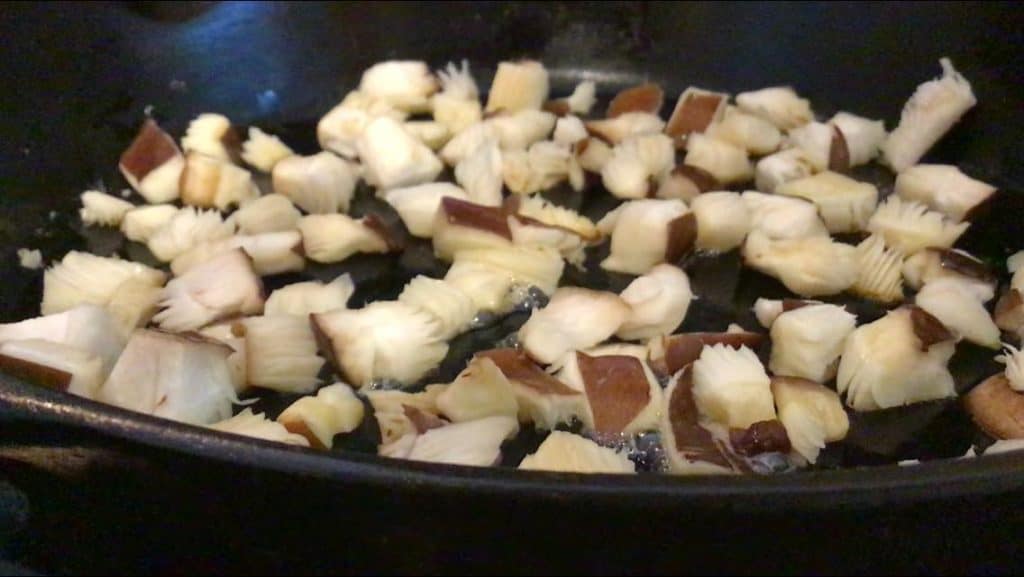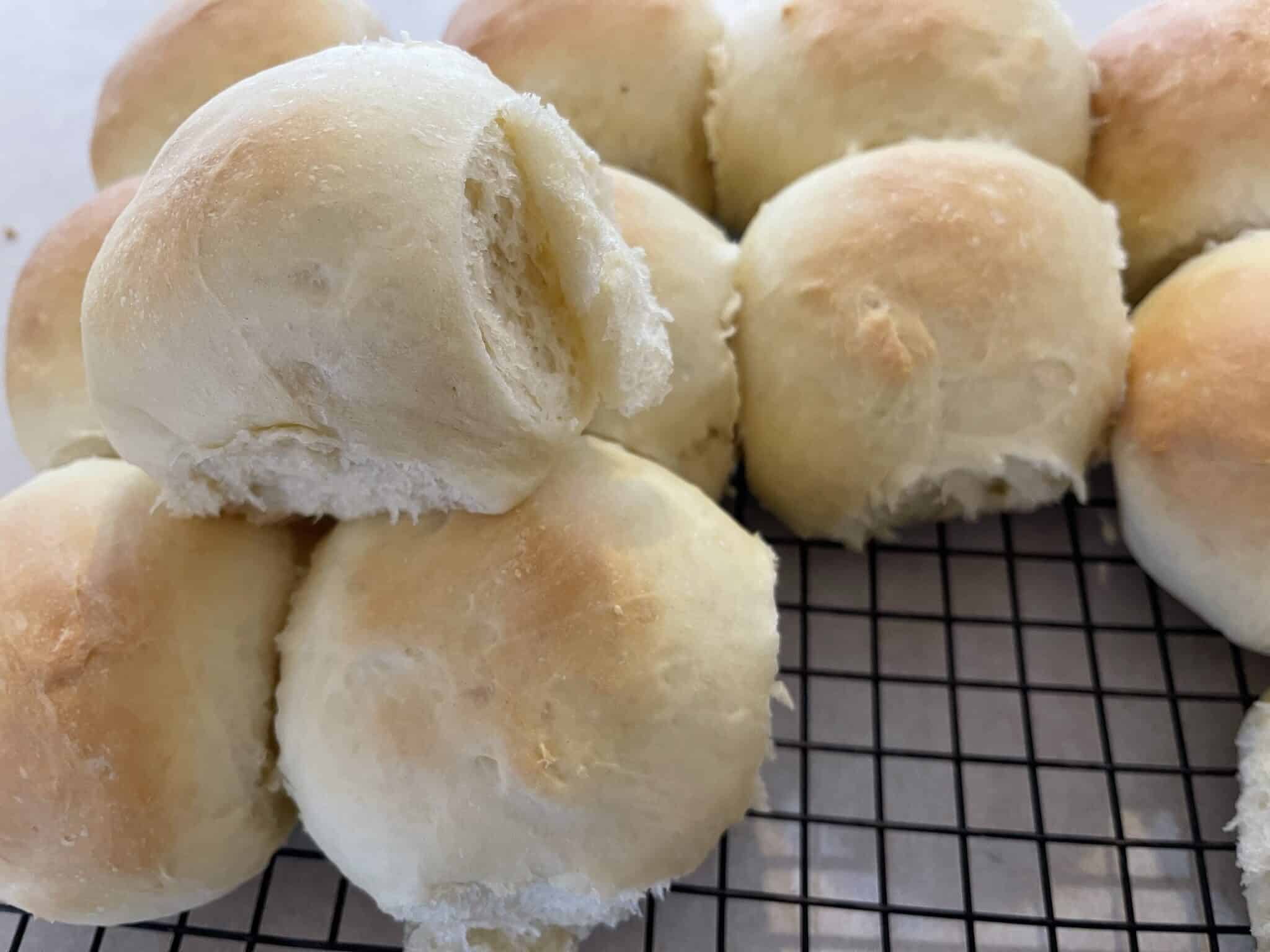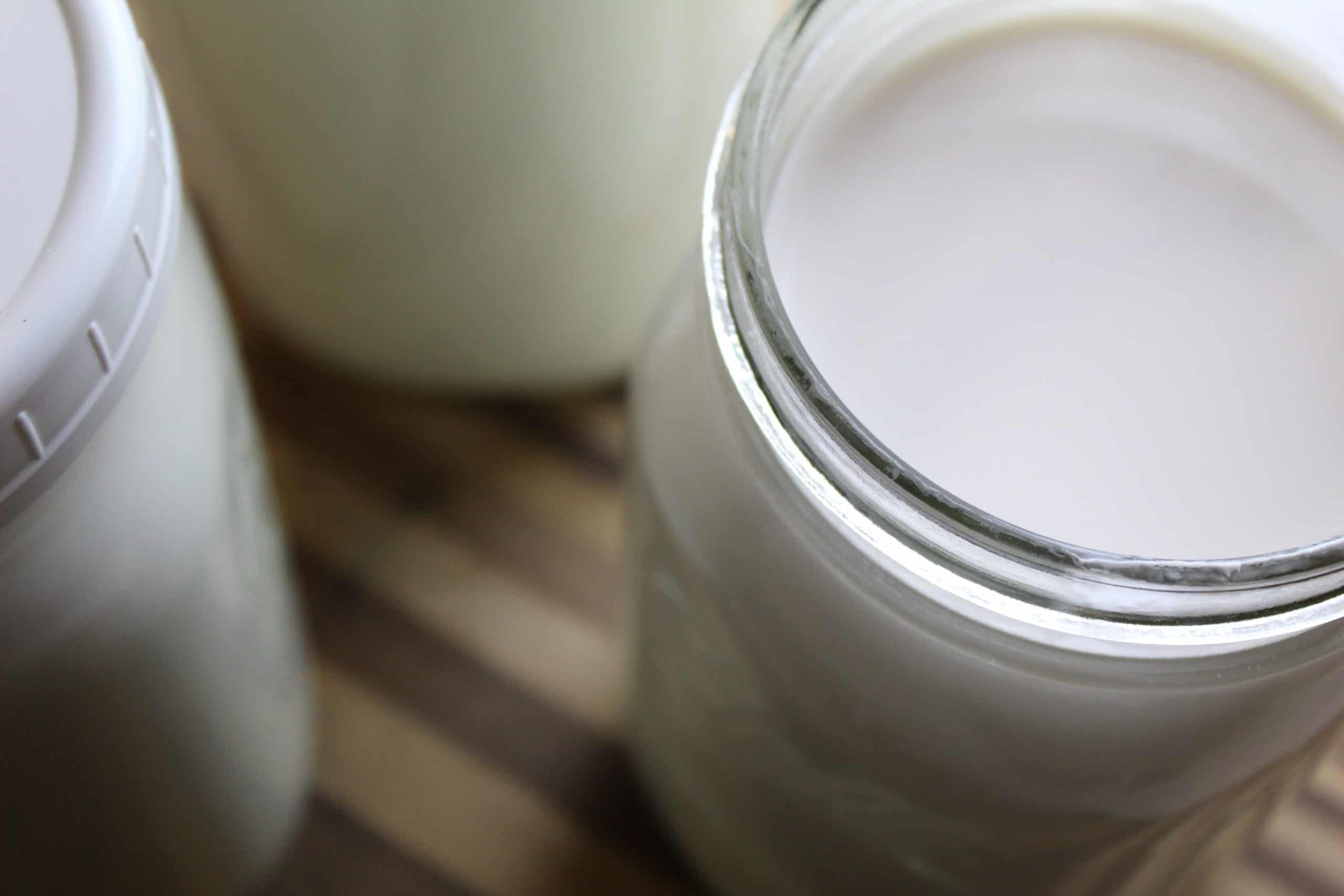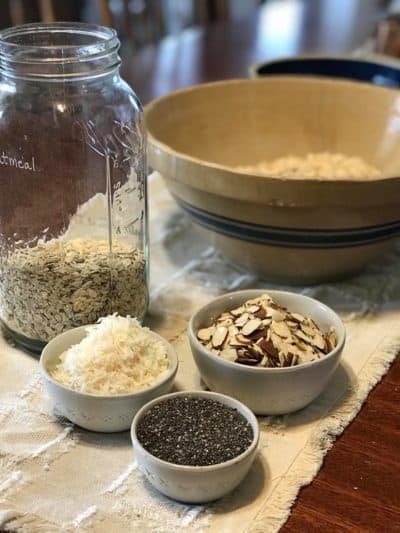Using and Preserving Shiitake Mushrooms
This week our neighbors gifted us with a HUGE basket of Shiitake mushrooms. Here’s how we clean and store shiitake mushrooms!
I never used to be a fan of mushrooms. As a kid they were gross, slimy, weird things that I wouldn’t touch with a ten foot pole. As I got older I didn’t mind having them on pizza.
Then in my early 20s, the movie Julie and Julia came out. I’m not going to get into how much I love Julia Child and how that movie is one of my favorites. The main point here is that in the film, Julie follows Julia’s recipe for browned mushrooms. They looked so appetizing I decided to try it myself. It was then that I became a mushroom convert.
What are Shiitake Mushrooms?
Shiitake mushrooms have been around for well over 1,000 years. They were first cultivated in Japan from Shii trees, hence Shiitake. They didn’t start getting popular in the United States until the 1980s. They are light to dark brown with gills on the underside. The top edge will sometimes will be curled under.

Why are Shiitake Mushrooms Good for You?
Mushrooms in general are made up of mostly water so they are a very low calorie food option. Shiitakes are a great natural source of vitamins including 26% of your daily Niacin needs, which is good for the digestive system and skin. 30% of vitamins B5 and B6, which are pivotal in red blood cell creation. 18% of Riboflavin, which helps us break down our foods to produce energy.
There are other potential medicinal benefits including fighting cancer cells, supporting the immune system, and stimulating brain activity. There aren’t many scientific resources to cite on those topics, so those are areas for further self study if you are interested.

How to Clean Shiitake Mushrooms
If you have whole mushrooms, it is okay to go ahead and wash them. The chefs over at Cooks Illustrated did a test, washing and then weighing the mushrooms before and after. They found the mushrooms absorbed very little water. Just give them a quick rinse right before you are going to use them, then wipe dry immediately.
If you have mushrooms that are already cut, just wipe them. Mushrooms soak up water very easily. When washed, they act almost like a sponge. Even if left to dry, it will take a long time for that moisture to go away. Goopy mushrooms are not ideal for cooking with, especially if you plan to sautee them.
A slightly damp paper towel or a fresh tooth brush work well for brushing off mushrooms.

How to Store Mushrooms
Most resources you will look at tell you to store mushrooms in a breathable paper bag in your fridge.
I recently came across a Cooks Illustrated article that says do NOT store them this way. Rather store them in a plastic bag, partially opened to allow for ethylene gas to escape. I say, try both. Then stick with whichever works best.
Preserving Mushrooms for Later
The two primary ways I save mushrooms for later use is through dehydrating and freezing.
Dehydrating Shiitake Mushrooms
Clean your mushrooms either by brushing or lightly rinsing.
Remove the woody stem and toss it in your compost.
Slice the mushrooms to about 1/4 inch thickness.
Place on dehydrator trays and let dehydrate for 6-8 hours at 110-120 degrees F. Check for done-ness around hour five. Remove a slice from the dehydrator and let it cool. Then snap it. If it is crisp and dry, your mushrooms are done!
Add these later to soups for extra nutrition and depth of flavor.

Freezing Shiitake Mushrooms
Raw mushrooms don’t freeze well. Actually they freeze fine but they don’t snap back when thawed.
To freeze your mushrooms, you’ll have to cook them first.
Wash or brush off your mushrooms as previously mentioned.
Slice the mushrooms to about 1/4 inch thickness.
Add a few tablespoons of butter to a warm skillet on a high ow, or medium low. Add the mushrooms. Toss them in the butter to coat, then let them sautee for 4-5 minutes. Check to see that they are browned. If not, let them go a little longer.

Flip the mushrooms and repeat.
Once done, line a cookie sheet with parchment paper. Lay the mushrooms out in a single layer and place them in the freezer for 2-4 hours.
Once frozen, put the mushrooms in a freezer container or freezer zip bag. Store in the freezer.
When you want to use them, don’t thaw them first! Just toss the frozen mushrooms right in a hot pan and cook ’em up.
These are great for eggs, omelettes, quiches, stir fries, etc.
Pickling Shiitake Mushrooms
I haven’t personally pickled mushrooms before but I certainly have enjoyed eating them from time to time. There are several recipes out there for pickled mushrooms you could try. I tend to like Alton Brown’s recipes so here is an option you could try out, just replace button mushrooms with shiitakes. Or this option from Saveur looks darn good too.
Watch and Learn
Pin it for Later








